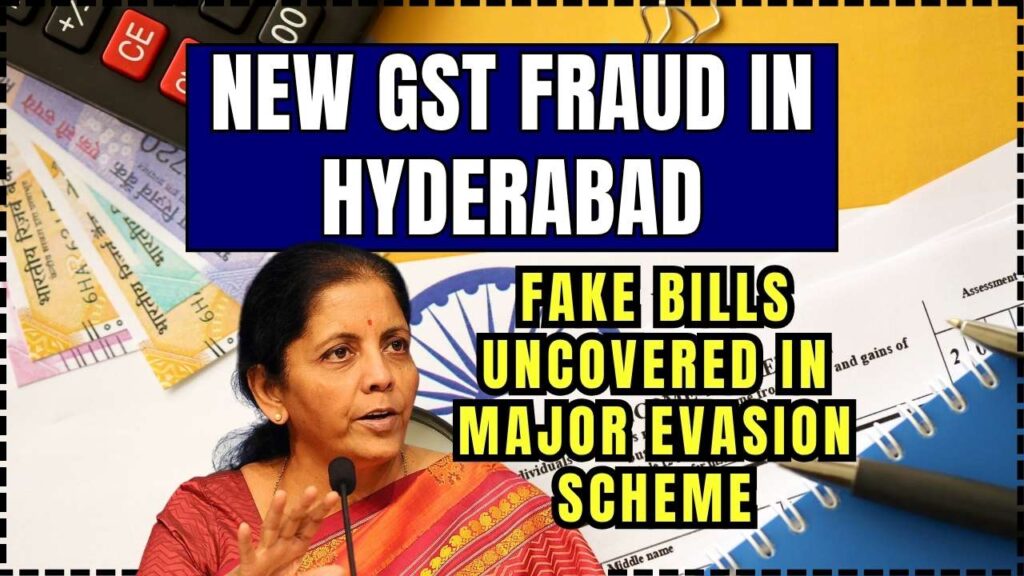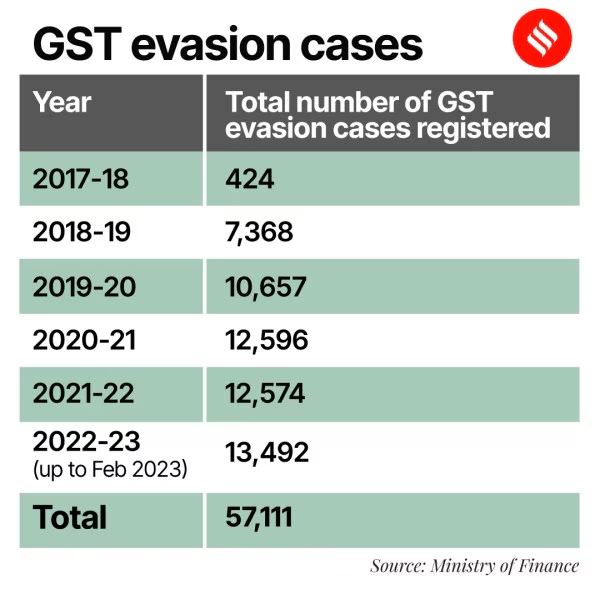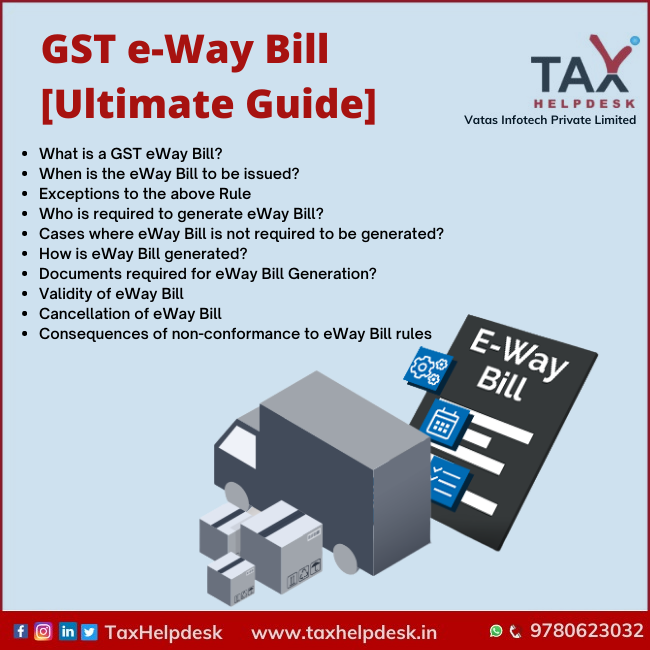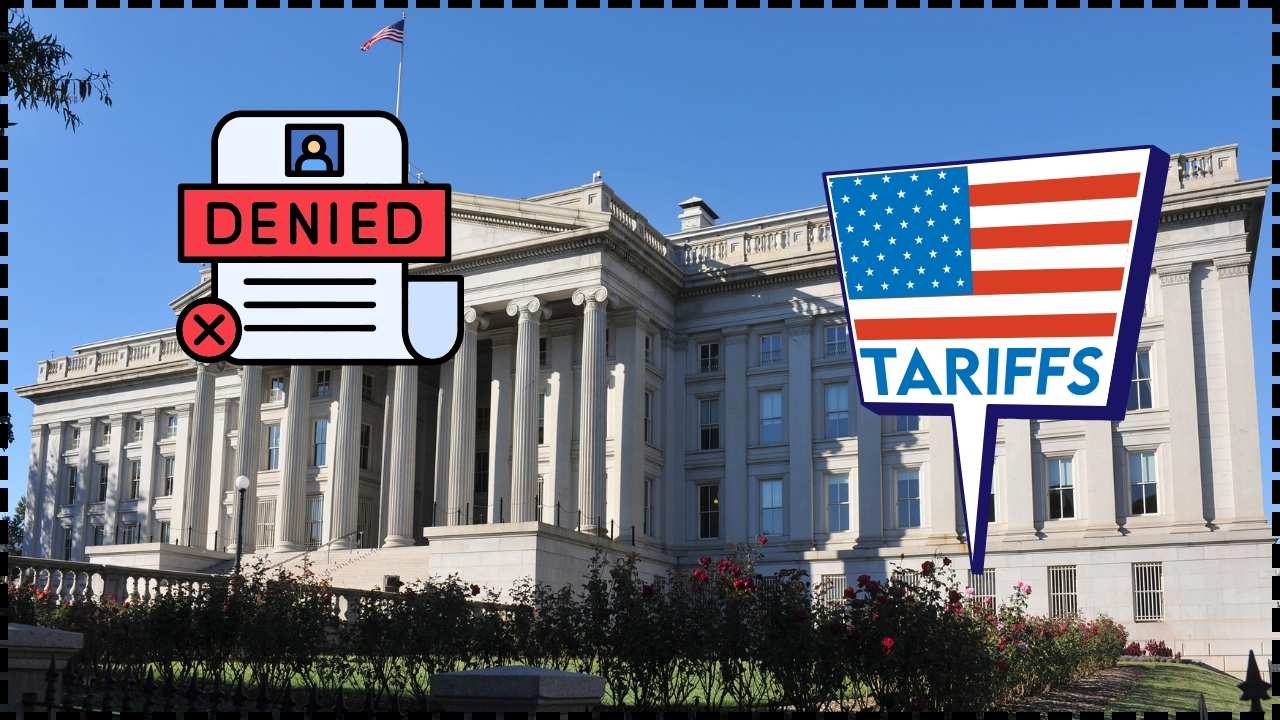
New GST Fraud Exposed in Hyderabad: The Indian Goods and Services Tax (GST) system has been facing its share of challenges since its introduction, especially when it comes to ensuring that businesses comply with the rules. Recently, a massive GST fraud case has surfaced in Hyderabad, revealing the scale of tax evasion being conducted through fake bills and ghost transactions. The Hyderabad Commercial Taxes Department has uncovered a complex network of fraudulent activities involving fake GST invoices, leading to a significant loss in tax revenue for the state and central governments.
This discovery has sent ripples across the business community, raising questions about how such large-scale frauds are being perpetrated and how businesses and authorities can better detect and prevent them. The investigation into this massive fraud involving Keshaan Industries LLP has already uncovered staggering figures, and this case could provide valuable lessons on tackling fraudulent practices in GST compliance. In this article, we’ll break down the details of the Hyderabad GST fraud case, discuss how it was uncovered, and provide practical insights into how businesses and professionals can avoid falling victim to similar schemes. We’ll also highlight the key takeaways from this case to help improve GST compliance.
New GST Fraud Exposed in Hyderabad
The recent GST fraud case uncovered in Hyderabad sheds light on how large-scale tax evasion can occur through fake invoices and ghost transactions. The authorities’ quick response and use of technology to track fraudulent activity is a valuable lesson for both businesses and tax officials. For businesses, maintaining proper invoicing procedures, verifying business partners, and using technology for compliance are key steps in avoiding similar fraudulent schemes. As GST enforcement becomes more stringent, businesses must take proactive measures to ensure they are complying with the law and avoiding potential risks of fraud. The Hyderabad case is a cautionary tale and a reminder that the GST system requires transparency and honesty to work effectively for everyone involved.
| Key Point | Details |
|---|---|
| Fraud Involved | Fake GST invoices used for non-existent copper supplies |
| Value of Evasion | Estimated at ₹100 crore, with approximately ₹33.2 crore in Input Tax Credit (ITC) fraud |
| Key Detection Method | Analysis of toll gate records showing empty vehicles passing through highways |
| Raid Locations | Corporate office in Hyderabad, godown in Secunderabad, and factory units in Medak District |
| Legal Actions | A formal complaint lodged, criminal case to be filed against the directors of Keshaan Industries LLP |
| Authorities Involved | Telangana State Commercial Taxes Department and Hyderabad Central Crime Station (CCS) |
| Source for Data | Newsmeter, Times of India |
Understanding the Hyderabad GST Fraud Case
The discovery of this GST fraud case in Hyderabad has exposed a new dimension of tax evasion in India. It involves the manipulation of GST invoices, allowing a company, Keshaan Industries LLP, to claim tax credits on non-existent goods transactions. The core of the fraud centered around fake copper supplies where invoices were generated for deliveries that never actually took place. Trucks were shown as transporting goods, but in reality, they were empty vehicles crossing through tolls.
The fraud was designed to be sophisticated, leveraging both paperwork and digital platforms. Keshaan Industries LLP used this method to falsely inflate its GST input tax credit claims. By generating these fake invoices, the company was able to evade a significant amount of tax, approximately ₹33.2 crore. The fraud was carefully coordinated through a network of shell companies and fake supply chains, making it extremely difficult for authorities to detect.
How Did the Authorities Catch the Fraud?
The breakthrough came when officials in the Telangana Commercial Taxes Department analyzed toll gate records, noticing that vehicles registered as transporting goods were not carrying any items. These discrepancies raised red flags. By cross-referencing the toll data with e-way bills, the authorities quickly uncovered a trail of fraudulent activity.
The investigation led to raids on multiple locations, including the company’s corporate office, warehouses, and factory units in Hyderabad and Medak District. During the raids, the authorities seized vital documents, including financial records and hard drives containing evidence of the fraudulent transactions. This evidence was instrumental in identifying the scale of the operation and linking the fraudulent activities to the company’s directors, Vikash Kumar Keeshan and Rajneesh Keeshan.

Key Steps Taken by Authorities
- Data Analysis: Investigators used toll gate records to trace vehicle movements. This showed discrepancies between what was claimed in the invoices and what was actually being transported.
- Coordinated Raids: The authorities conducted simultaneous raids at different locations connected to the company to gather evidence.
- Evidence Seizure: Crucial documents, including invoices, ledgers, and computer records, were seized, which helped to build the case against the company.
- Legal Action: A formal complaint was filed, and criminal proceedings are set to follow against the company’s directors for evading taxes using fake invoices.
These steps highlight how advanced data analytics and cross-checking between different sources of information can help uncover large-scale frauds in the GST system.
What Can Businesses Learn from This Fraud Case?
For businesses, especially those that are part of the supply chain, this case serves as a stark reminder of the importance of maintaining accurate and legitimate invoices. Here are some key lessons that can be applied to ensure compliance with GST laws:
1. Focus on Invoicing Accuracy
One of the simplest ways to avoid falling into fraudulent practices is to ensure that every invoice issued is backed by actual goods or services delivered. The Keshaan Industries case involved false invoices for goods that never moved. To avoid this, businesses should implement strict procedures to ensure that goods are physically shipped, and invoices reflect accurate details.
2. Verify the Legitimacy of Business Partners
It’s essential to work only with verified suppliers and customers who maintain proper business practices. Avoid doing business with companies that have a history of irregular invoicing or whose operations appear to be opaque.
3. Use Technology for Compliance
Implementing a robust accounting and ERP system that integrates GST compliance features can help reduce human error. Many businesses are turning to technology to streamline their processes and ensure that every sale and purchase is properly documented.
4. Regular Audits and Reviews
Regular internal audits of GST invoices, e-way bills, and other tax-related documents can help businesses stay on top of any discrepancies. Cross-referencing the e-way bills with actual deliveries is a simple yet effective way to ensure compliance.
5. Understand and Use the GST System Properly
Businesses must understand the legal framework of GST and ensure that they are not inadvertently involved in fraud by improperly claiming Input Tax Credit (ITC).
How the New GST Fraud Exposed in Hyderabad Impacts GST Enforcement?
The Hyderabad GST fraud case will likely lead to stricter enforcement of GST compliance, especially for businesses involved in large transactions. Authorities are now more aware of how fake bills are being used to siphon off government revenue, and this could lead to heightened surveillance of supply chains and greater scrutiny of invoices.
Businesses that fail to comply with GST laws risk facing severe penalties, including the loss of their tax credits and hefty fines. The introduction of more sophisticated technologies and data analytics tools will play a crucial role in tracking fraudulent activities.
Preventive Measures to Combat GST Fraud
In response to the growing issue of GST fraud, businesses and authorities must adopt a multi-pronged approach to prevention. Here are some strategies that can help curb GST fraud:
- Integration of Technology and Automation: The use of real-time monitoring systems and AI-powered software can help businesses and tax authorities detect fraudulent activity early. The GSTN (Goods and Services Tax Network) is already integrating such technologies, which businesses can leverage to stay compliant.
- Stronger Vetting of Suppliers: Companies should create a robust system for vetting suppliers, including checking GSTIN details, verifying physical addresses, and reviewing past invoices.
- Better Training for Employees: Regular training on GST compliance for employees handling invoices and tax filing can prevent errors and fraudulent activities. Encouraging a culture of transparency and accountability within the company is essential.
- Collaboration Between States and the Center: Strengthening the coordination between state and central GST authorities can enhance fraud detection across state borders, where fraudulent companies often operate.

Say Goodbye to In-Person GST Hearings: ‘Faceless Adjudication’ System to Be Tested from Friday










